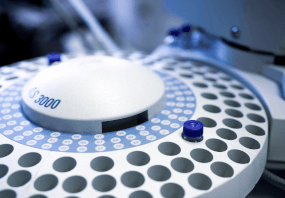General description
DNA endonuclease RBBP8 (UniProt: Q99708; also known CtBP-interacting protein, CtIP, Retinoblastoma-binding protein 8, RBBP-8, Retinoblastoma-interacting protein and myosin-like, RIM, Sporulation in the absence of SPO11 protein 2 homolog, SAE2) is encoded by the RBBP8 (also known as CTIP) gene (Gene ID: 5932) in human. RBBP-8 is an endonuclease that cooperates with the MRE11-RAD50-NBN (MRN) complex in processing meiotic and mitotic double-strand breaks (DSBs) by ensuring both resection and intrachromosomal association of the broken ends. RBBP8 is phosphorylated upon DNA damage (at Thr859) by ATR and this phosphorylated form binds to chromatin to initiate resection. The non-phosphorylated form does not bind to chromatin. It is reported that ATM activity is required for an early step in resection, leading to ATR activation, CtIP- phosphorylation, and accumulation of CtIP on chromatin. RBBP8 functions downstream of the MRN complex and promotes ATR activation and its recruitment to DSBs in the S/G2 phase facilitating the generation of ssDNA. It is localized predominantly in the nucleus and interacts with CTBP, with the C-terminal (BRCT) domains of BRCA1, and with the retinoblastoma protein. By interacting with BCRA1 it modulates transcriptional regulation, DNA repair, and cell cycle checkpoint control. Mutations in RBBP8 gene are known to cause Seckel syndrome 2, an autosomal recessive disorder characterized by proportionate dwarfism of prenatal onset associated with low birth weight, growth retardation, severe microcephaly, and mental retardation.
Specificity
Clone 14-1 specifically detects CtBP-interacting protein in HEK293 cells.
Immunogen
Epitope: domain of:
GST-tagged recombinant fragment corresponding to 278 amino acids from the C-terminal half of human CtBP-interacting protein.
Application
Anti-CtIP Antibody, clone 14-1, Cat. No. MABE1060, is a highly specific mouse monoclonal antibody that targets CtIP and has been used in Immunocytochemistry, Immunoprecipitation, and Western Blotting.
Immunocytochemistry Analysis: A representative lot detected CtIP in Immunocytochemistry applications (Murina, O., et. al. (2014). Cell Rep. 7(4):1030-8).
Western Blotting Analysis: A representative lot detected CtIP in Western Blotting applications (Yu, X., et. al. (2000). J Biol Chem. 275(24):18541-9; Bunting, S.F., et. al. (2010). Cell. 141(2):243-54; Wu, M., et. al. (2007). Mol Cancer Res. 5(12):1285-95).
Immunoprecipitation Analysis: A representative lot was used for CtIP Immunoprecipitation. (Yu, X., et. al. (2000). J Biol Chem. 275(24):18541-49).
Research Category
Epigenetics & Nuclear Function
Quality
Evaluated by Western Blotting in HEK293 cell lysate.
Western Blotting Analysis: 0.5 µg/mL of this antibody detected CtIP in 10 µg of HEK293 cell lysate.
Target description
~120 kDa observed; 101.94 kDa calculated. Uncharacterized bands may be observed in some lysate(s).
Physical form
Format: Purified
Protein G purified
Purified mouse monoclonal antibody IgG1 in buffer containing 0.1 M Tris-Glycine (pH 7.4), 150 mM NaCl with 0.05% sodium azide.
Storage and Stability
Stable for 1 year at 2-8°C from date of receipt.
Other Notes
Concentration: Please refer to lot specific datasheet.
Disclaimer
Unless otherwise stated in our catalog or other company documentation accompanying the product(s), our products are intended for research use only and are not to be used for any other purpose, which includes but is not limited to, unauthorized commercial uses, in vitro diagnostic uses, ex vivo or in vivo therapeutic uses or any type of consumption or application to humans or animals.
- UPC:
- 51472500
- Condition:
- New
- Availability:
- 3-5 Days
- Weight:
- 1.00 Ounces
- HazmatClass:
- No
- MPN:
- MABE1060












